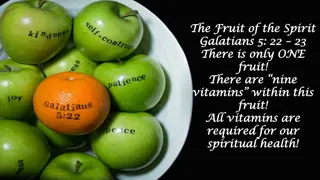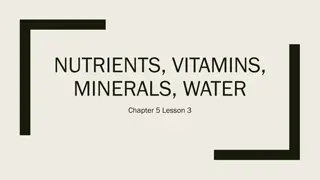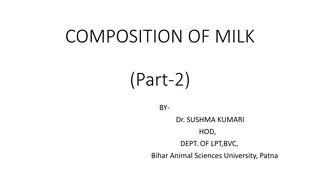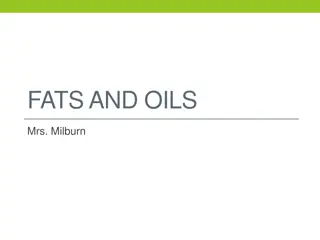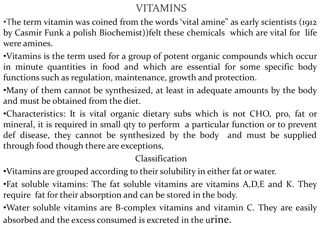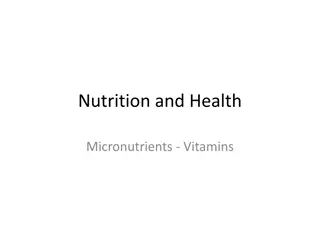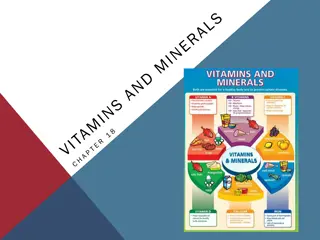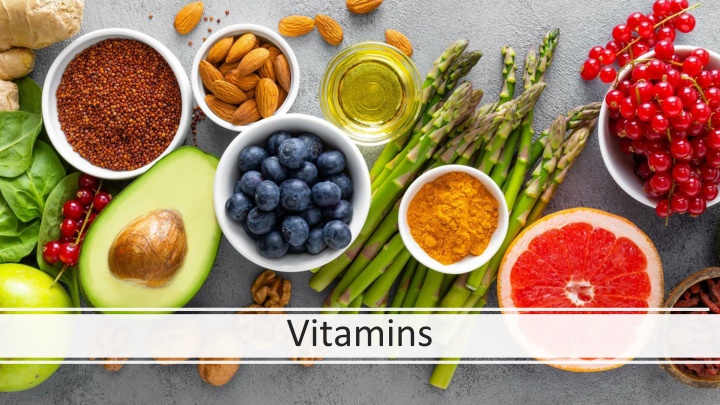
Importance of Vitamins in Your Diet
Explore the world of vitamins - essential nutrients crucial for overall health. Learn about the classification of vitamins, their importance, dietary sources, and potential deficiency symptoms. Discover how fat-soluble and water-soluble vitamins play a role in maintaining a healthy body and how their overconsumption can lead to health issues.
Download Presentation

Please find below an Image/Link to download the presentation.
The content on the website is provided AS IS for your information and personal use only. It may not be sold, licensed, or shared on other websites without obtaining consent from the author. If you encounter any issues during the download, it is possible that the publisher has removed the file from their server.
You are allowed to download the files provided on this website for personal or commercial use, subject to the condition that they are used lawfully. All files are the property of their respective owners.
The content on the website is provided AS IS for your information and personal use only. It may not be sold, licensed, or shared on other websites without obtaining consent from the author.
E N D
Presentation Transcript
Recap 1. What is a nutrient? 2. Can you name the 6 nutrients? 3. What is a source of protein? 4. Did you have breakfast this morning? What nutrients did it contain? 5. What are 3 types of carbohydrates? 6. Can you name an unsaturated fat?
What I Will Learn Vitamins After completing this section I will be able to: Explain how vitamins are classified Assess the sources of each vitamin in the diet Examine the functions of each vitamin in the body Describe the deficiency symptoms of each vitamin Recognise the effects of overconsumption of certain vitamins.
Vitamins are micronutrients that are essential for our health. They are present in small amounts in most of the foods that we eat.
Classification of vitamins Vitamins are classified into two groups. Fat-soluble vitamins (A, D, E and K) are stored in the body. Water-soluble vitamins (B group and C) cannot be stored by the body and need to be eaten every day.
Why are vitamins important? 1. What do we need Vitamin A for? 2. Why is vitamin C important? 3. What is the role of vitamin D?
Rickets Rickets is the softening and weakening of bones in children, usually because of an extreme and prolonged vitamin D deficiency. Rare inherited problems also can cause rickets. Vitamin D helps your child's body absorb calcium
Fat-soluble vitamins (A, D, E and K) As fat-soluble vitamins are stored in the fatty tissue of the body, supplies can build up to toxic levels. This is called hypervitaminosis and normally occurs when people overuse vitamin supplements. Hypervitaminosis A and D are most common.
Water-soluble vitamins (B group and C) cont. Vitamin C can be easily destroyed by careless food preparation and cooking. To keep vitamin C in foods, buy only really fresh foods and eat raw when possible.









